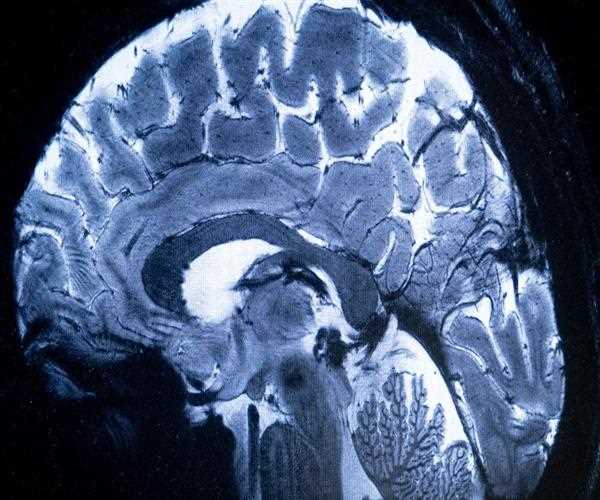Search here

07-Apr-2024 , Updated on 4/8/2024 7:27:19 AM
Human Brain's first images come in the World's most powerful MRI machine
Stepping up the game for medical imaging, the world's most powerful MRI scanner called Iseult, has delivered the first images of the human brain. This technology, established by the French Alternative Energies and Atomic Energy Commission (CEA), not only makes decisive progress in understanding the workings of our brains but also holds the promise of curing deteriorating neurological diseases.
Revolutionizing Brain Imaging: Impacts of 11.7 Tesla Fields
However, what is considered to be the breathtaking element in this revolutionizing technology is, without doubt, the magnetic field intensity of nearly 12 T, which is many times higher than the field strength of a magnet mechanism in conventional MRI scanners. That said, they’re way below the varieties of magnitude of traditional hospital MRIs which usually run at 1.5 or even 3 T.
Unparalleled to any of the previous technologies, this new power allowed Iseult to make such microscopic images of the brain with the highest resolution, enabling prisoners of researchers studying the brain to see the ways it worked in real-time.
A view on the complicated matter of the brain's structure
The pictures Iseult takes give a hellish that reveals the marvelous complexity of the brain at a level no other device has achieved. Provided with such a short acquisition time of four minutes, Iseult is capable of penetrating to the 0.2 mm (0.008 in) thinness of the brain’s tissue horizontally and gets slices of 1 mm (0.04-inch) thickness. This level of detail, which was unachievable with earlier MRI machines, affords researchers to view the brain's tiniest structure, a discovery that adds tremendously to our understanding of the brain's intricate networks and channels.
Untie the Mysteries of Consciousness and Neurodegenerative Diseases
It is the new resolution of Iseult that may act as an ultimate Ace in the hole that leads to unveiling many knowledge gaps about consciousness and neuronal disorders. Through the investigation of the brain’s complex processes and neuronal signatures, researchers seek an understanding of the way consciousness is encoded and the manner it is revealed in neural activity. Interestingly enough, Iseult's increased expertise not only connects the dots but also allows us to obtain a deep insight into neurodegenerative diseases like Alzheimer's and Parkinson's.
Adding to this, the machine's capability to detect chemical signatures, with molecules like glucose and glutamate serving as an indicators of diseases, has a wide scope of not only discovering but also treating affections of the brain.
Moving Forward Medical Sciences and Healing
By the way, Iseult's abilities open the door for many areas of medico-science, involving not only neuroscience limitedly but all curative and preventive medical approaches as well. By its capacity to visualize the anatomy down to its smallest unit, Iseult is expected to introduce fundamentally brand-new ways of treating and diagnosing patients with neuropsychological and psychiatric disorders. Also, the machine has a high magnetic field strength, which enhances the detection of chemical species with a low signal which makes new ideas for drugs and medicine for all individuals.
Ethical Considerations and Patient Care
The use of the Iseult MRI scan brings along significant ethical issues, particularly those relating to patient therapy and research procedures. While the machine gets new ways to see the human brain quickly, it also raises questions about patient comfort and security being taken seriously. Allowing individuals to undergo MRI scans away from fear and worry is critical and this is even more so with the fact that the process may take a long time.
Besides, researchers should follow stringent ethical principles for experiments involving human subjects by safeguarding their autonomy and privacy, to bring out gains while not increasing any technical hazards. Using the patient as a guide and following ethical rules, neuroscientists can unlock the full potential of neuroimaging systems like Iseult, with beneficence, non-maleficence, and justice as its pillars.
Challenges and Future Directions
Though its powerful capacities are undeniable, the size, complexity, and high price are the key hurdles for large-scale applications. The machine instrument has a dimension of 5 m×5 m (16.5 ft×16.5 ft), weighs 132 tons, and requires a lot of liquid helium (approx 1500 tons) cooling the machine magnets to achieve the required temperature. Yet, there is an emerging optimism that Iseult can reshape medical imaging and thus provide groundbreaking discoveries in neuroscience and similar domains.
Conclusion: New Development in Imaging the Brain
The opening of a new and most powerful MRI scanner is a milestone in the evolution of diagnostic imaging methods in the world of medicine. Using a never-before-seen approach and abilities, Iseult is likely to lead us to undiscovered lands in the discovery of the human brain thereby transforming the diagnosis and treatment of those disorders. As scientists push the limitations of research by applying cutting-edge imaging technologies, our understanding of the mind will rise to new heights which in turn will allow us to develop treatments and strategies that will help enhance human health and well-being.

Student
An MBA in finance imparts and improves management aptitude, inventive ability, critical thinking ability, and so forth. It offers a real-time experience that fabricates a staunch career foundation for students and working professionals. It helps them to thoroughly understand the financial sector.
Comments
Join Our Newsletter
Subscribe to our newsletter to receive emails about new views posts, releases and updates.
Copyright 2010 - 2025 MindStick Software Pvt. Ltd. All Rights Reserved Privacy Policy | Terms & Conditions | Cookie Policy